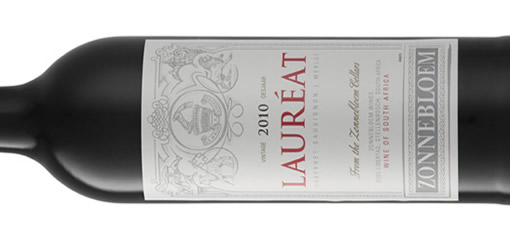Zonnebloem’s flagship wine is Lauréat, a charismatic, plush and polished blend that takes its name from the laurel conferred in ancient times on those worthy of distinction.
Bearing a very distinctive label that’s very different from the rest of the range, it’s an unashamed expression of vintage,” says Bonny van Niekerk, who makes Zonnebloem’s reds under cellar-master Deon Boshoff.
“Common to all Lauréats is a rich, dense concentration of ripe berry flavour with some spicy and savoury notes that’s juicy but weighty on the palate,” she says. “Every vintage is very individual and has a singular profile, shaped by the specific climatic conditions prefacing the harvest.”
Like the label that depicts a lion to reflect an element of the family coat of arms of Zonnebloem’s one-time owner, Petrus Jacobus Malherbe; and the lamb, that forms part of the family crest of a later owner, John de Villiers, it is a combination of power and approachability, she says. “This is a wine where you have to put your whole self into it to strike the right balance.”
Lauréat is always dominated by Cabernet Sauvignon. It includes a substantial portion of Merlot and some Shiraz, but the use of Petit Verdot and/or Mourvèdre or Malbec are contingent on the harvest. “For this wine we take the first pick of the best of the harvest.
“We want intense, deep colour and the fragrances and flavours of full fruit ripeness but also some earthiness and firm but supple tannins. Ultimately, though, we let the vintage have the last say.”
All grapes are sourced from Stellenbosch vineyards, in many instances from suppliers who have been delivering to Zonnebloem over generations but Lauréat can include fruit from newer growers who are also proving exceptionally adept at reflecting the potential of their sites.
The newly released 2012 Lauréat features Cabernet Sauvignon, Merlot, Shiraz, Petit Verdot and Mourvèdre (but the 2013, still to be bottled, doesn’t include any Mourvèdre). Fruit for the current vintage came from three Stellenbosch growers, including one whose family has been delivering to Zonnebloem for 65 years. All three work in very close concert with the viticultural and cellar teams.
The grapes from each vineyard block were vinified separately to give the cellar team the building blocks needed to create this mouth-filling, layered blend. In all cases, the juice was cold-soaked for optimal colour and intensity of character. “For this wine we want an explosion of aroma and flavour backed by good structure.”
Bonny explains that a process of delestage fermentation contributes to the fruit richness of the wine, and tannins with some muscle but enough give to create a generous, velvety palate. As the must ferments, it is drained from the skins to remove stems and pips, and then returned to continue fermenting on the skins. In the process, it is allowed to aerate to give a smoother finish to the wine.
The wine spent a total of 18 months in a combination of new and second-fill French and Hungarian small 300-litre barrels.
Bold but finessed, its dark, gleaming garnet colours suggest its intensity of succulent black and red fruit. On the nose and in the mouth, pepper, savoury and earthy tones give it a multifaceted and very appealing complexity.
Bonny, a vegetarian, says carnivores love this wine because it partners so superbly with osso bucco, venison roasts, slow-cooked lamb and hearty casseroles. She enjoys it best with truffle-infused mushroom risotto and robust cheeses.
Each pictorial element of the Lauréat label depicts some part of Zonnebloem’s history. Apart from the lion and the lamb, it carries the De Villiers motto: La Main a l’oevre, meaning the “hand that works”, a gable of the home of the Furters, another family who owned the farm for generations, and also a trophy to underscore its award-winning history.
Available nationally from the major chains and certain specialty stores, the blend is expected to retail for around R95 a bottle.




